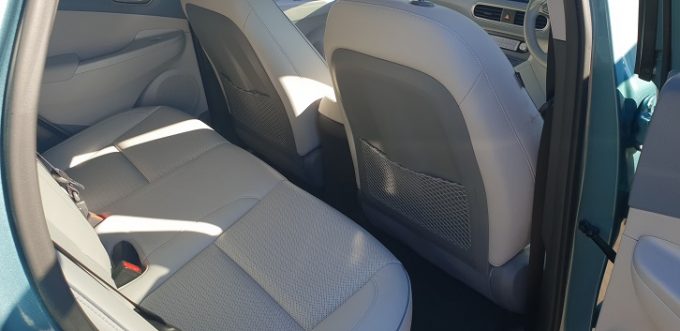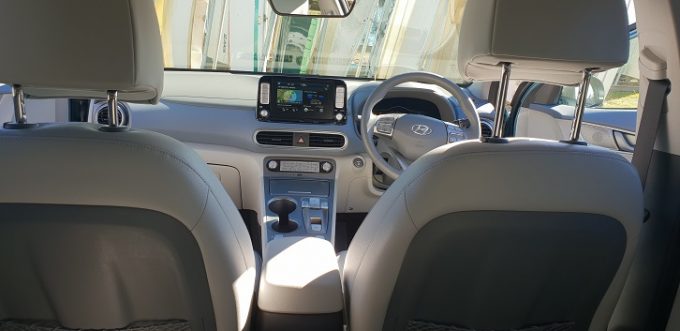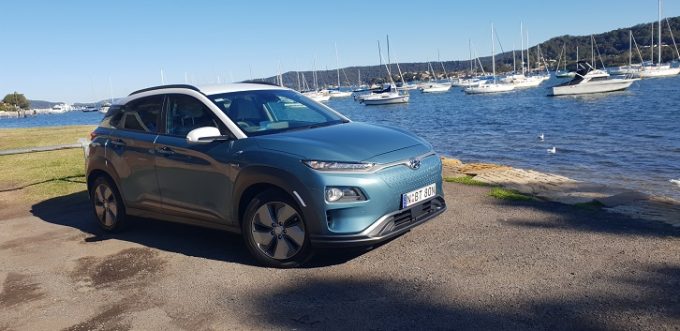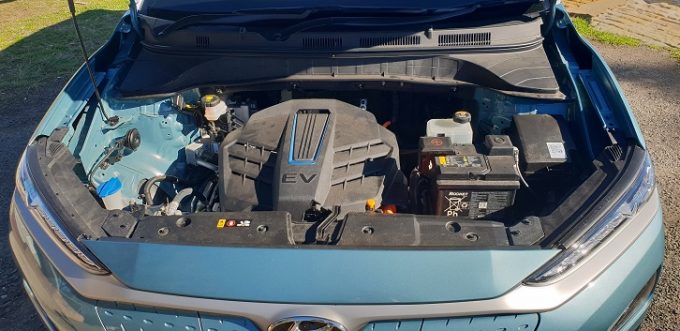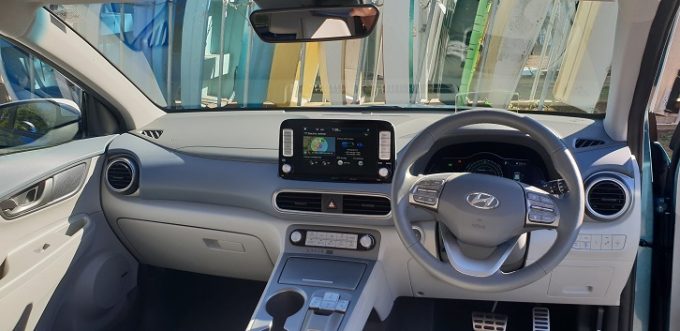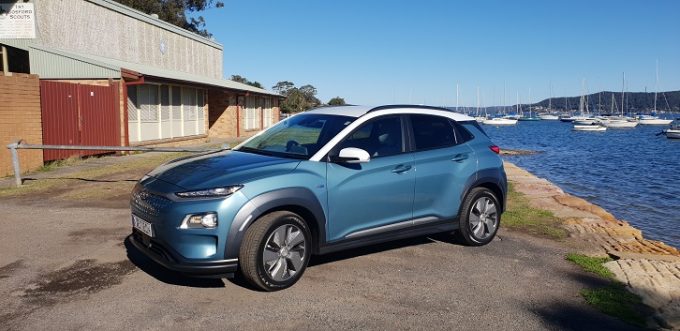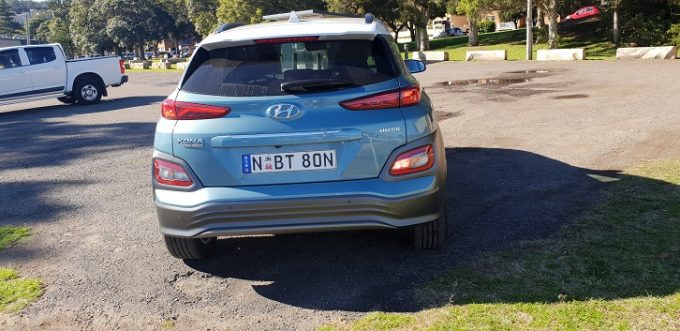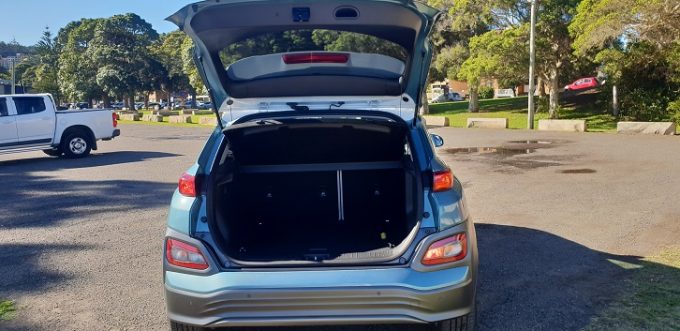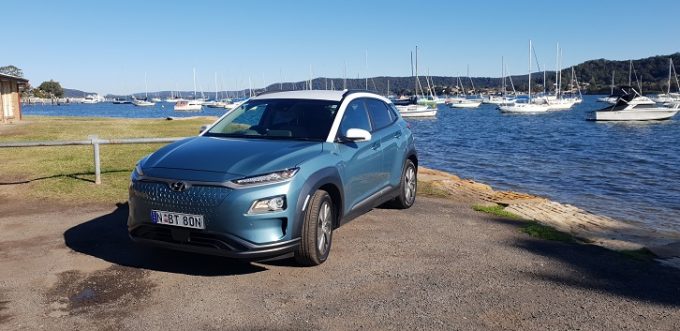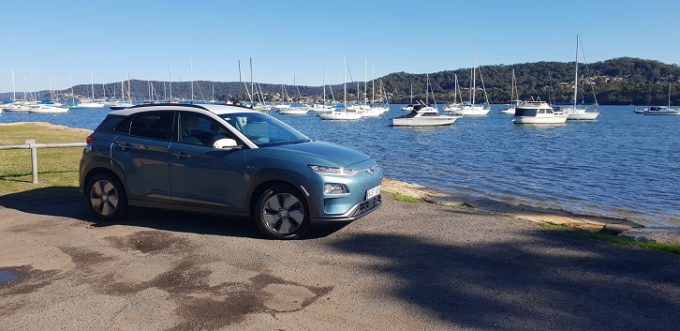The automotive sector is undergoing the biggest quantum shift since its inception, with electric cars slowly reaching mainstream prominence. Arguably the turning point for all this was the emergence and subsequent popularity of Tesla, who showed that electric cars could be sexy, fun and easy to own.
Now mainstream manufacturers want a slice of the action, with Hyundai one of the first to offer a long-range electric vehicle in Australia.
Hyundai has taken a very multi-faceted approach to new energy vehicles, with something for all tastes. The Ioniq range, for example, consists of conventional hybrid, plug-in hybrid and a shorter range EV (280km) with a lower entry price ($44,990)
Billed as “Australia’s first fully-elecric SUV”, we borrowed a fully charged Kona electric Highlander to see if this long range effort can work for those looking to transition away from fossil fuels.
2019 Hyundai Kona Electric Highlander Review: Cabin Space and Comfort
For its first long-range EV, Hyundai has started with a familiar base, using the Kona small SUV. At 4180mm long, 1800mm wide and 1570mm tall, it features compact external dimensions but a wheelbase of 2600mm means it is very space efficient in terms of internal volume. The wheelbase is only 50mm less than the i30.
Despite the battery back being stored under the floor, there is no apparent pentalty to foot room. The Kona EV features a remodeled centre console compared with its conventional counterpart, with a handy amount of storage space.
Boot space varies between 332 litres with the seats upright to 1114L when they are stowed flat. Unfortunately, there is no “frunk” under the bonnet as this is where the pemanent magnet synchronous motor lives.
Seat comfort in the leather seats is very good, with heating and cooling functions working quickly and effectively even in extreme climates.
2019 Hyundai Kona Electric Highlander Review : Infotainment and Ergonomics
Considering the car’s significant premium over the petrol powered Kona Highlander, you would hope the interior is more special. Thankfully, considerable effort has been made to distinguish the EV from other Konas.
The colour palate consists of white, blue and silver highlights, with a conscious effort to eliminate any grey plastic. While taste is subjective, we found the theme both upmarket and calming.
Other changes include a digital gauge cluster and a button gear selector, which takes some getting used to but is easy to adapt to. While the car features a head up display, it features a motorized plastic screen which we found to be inferior to the typical, windscreen projection type.
Hyundai’s 8.0-inch infotainment system including navigation was present and accounted for, but with extra EV-related features to help you find a charging station, for example. You can also program when you want charging to commence and several other cool functions.
A map that estimates range at destination would’ve been welcome, but there’s no doubt scope to add this down the track.
2019 Hyundai Kona Electric Highlander Review: Design
Design-wise, the Kona is a pretty funky car to begin with and this electric version builds on that by eliminating the front grille, as well as other measures that reduce the drag from 0.34 to 0.29Cd.
While it might not be to everyone’s taste, it stands out and will cater to those who want their EV distinctive.
2019 Hyundai Kona Electric Highlander Review: Engine and Performance
The front-wheel drive Kona electric develops 150kW and 393Nm, which is developed instanteously –this is an electric car, remember. As a result, the Kona EV is very rapid off the line, eliciting wheel chirp from the low rolling resistance tyres.
At 1743kg, the Kona is very heavy for a vehicle of its size, but its worth remembering that most of that weight is concentrated low in the chassis, in the battery pack. The company quotes a 0-100km/h time of 7.6 seconds, which is quite brisk but doesn’t convey the sharp off-the-line acceleration which is very handy for overtaking. Top speed is limited to 167km/h.
2019 Hyundai Kona Electric Highlander Review: Transmission
While there is no transmission to speak of in the traditional sense, the Kona EV features regenerative braking –the level of which can be adjusted using steering-mounted paddles.
Once you become accustomed to this, you can coast down hills in the maximum setting, harvesting precious momentum to replenish the battery pack. It is a smart system that adjusts to traffic ahead. This means it can seem to have a mind of its own, reverting back to the maximum setting, whichcan conjure quite a lot of interia and, when combined with the instant thrust of the e-motor, make you a bit queasy.
As mentioned earlier, the gear selector is of the push-button variety. It pays to be conscious of which gear you’re in.
2019 Hyundai Kona Electric Highlander Review: Handling and Steering
This is a fine handling car, capable of generating fun. The combination of instant power and a modern chassis means it does have some character.
The steering, however, while well-weighted is a bit more inert than we would like
1743kg in such a small car is never going to feel like a Lotus Elan around the bends, but as usual, Hyundai’s local chassis engineering team has done a fine job of masking that weight.
Mild tugs of the wheel can be felt under sudden application of power and, we never thought we’d say this, but we’d like the traction control to intervene a fraction earlier than it does. This could be alleviated with a rear- or all-wheel drive chassis, but is is a minor niggle and one that doesn’t diminish the car’s status as a user-friendly machine.
2019 Hyundai Kona Electric Highlander Review: Ride and NVH
Taking the petrol engine out of the equation means that other noises become more pronounced. Wind and tyre noise are more apparent as a result but still well contained, befitting a vehicle of this price. The reduced drag coefficient helps here too.
The ride is compliant and another testament to the local teams efforts. Some 37 different shock absorbers and six combinations of spring and anti-roll bar were tested before this calibration was settled on. As Australia has ahem, unique roads, their contribution to this package is invaluable.
2019 Hyundai Kona Electric Highlander Review: Energy consumption and running costs
Use of heater drastically reduces range, because unlike a petrol car, it isn’t just waste heat diverted to cabin –it has to be generated from battery power. Claimed 480km of range dropped into the three hundreds when we blasted the heater (it became nice and toasty a lot quicker than a petrol car though).
Servicing is another key benefit of this model. Intervals are every 15,000km or 12 months, with the first five visits capped at $165.
A 7.2kWh installed home wall-box charger will take 9 hours and 35 minutes to charge the 64kWh battery pack. A 100kW DC charger will take 54 minutes for 80 per cent charge, compared with 75 minutes for 50kWh.
You can use Hyundai’s website to find suitable charging stations, as well as calculate running costs here.
The car is covered by Hyundai’s standard five year/unlimited km warranty and one year roadside assistance package, as well as an eight year/160,000km battery guarantee.
2019 Hyundai Kona Electric Highlander Review: Safety
The electric Kona features the brand’s full suite of active safety features, plus a few of its own. One example of this is the alien-esque hum that emanates at low speed to warn unwary pedestrians of its presence. It sounds like a spaceship.
While the electric version of the car hasn’t been specifically tested by ANCAP, its petrol-powered counterpart has, where it scored a 5 star rating. Since they ostensibly share the same body structure, much of this data is transferrable to the elecric version. Read the full report here.
alien-esque noise emanates from the car at low speed to warn pedestrians.
2019 Hyundai Kona Electric Highlander Review : Value for Money
Over 60 grand is a tall order for a small car of this calibre, but for a well-engineered elecric vehicle at the vanguard of technology it is reasonable.
You could always take the 1.6-litre turbocharged Highlander model for $21,000 less but the electric car is a substantially different animal. This significant premium just reflects the reality of the technology at the moment. Being Hyundai, it still represents good value and much effort has been made to stuff the car full of safety and convenience features to justify the price. It will be interesting to see if MG can better this when the eZS reaches Australian shores next year.
2019 Hyundai Kona Electric Highlander Review: Conclusion
Electric cars are definitely on the rise and this vehicle is one that demonstrates why their popularity is gaining so much. Here is an electric vehicle not designed as a science experiment, but as a usuable, every day proposition.
In time, electric vehicles may become the default mode of transport, with the same refuelling time as petrol vehicles.
When that happens, the Kona electric Highlander will be remembered as a trailblazer. For now, it is a fine demonstration of the brand’s technical capabilites.

